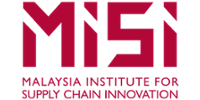Introduction
Often procurement decisions are still made on piece costs ignoring supply chain and other indirect costs. In the world of global sourcing such decisions can end up being very expensive mistakes. In this course, the focus is on developing the skills to correctly evaluate total landed costs (TLC) and estimate total costs of ownership (TCO) if applicable.
Participants will learn how to apply TLC and TCO to make improved sourcing decisions through hands-on team exercises and discussions.
Program Content
Session 1
Topic :What is TLC, TCO, and Present Value?
Description :This session will define the fundamental concepts of TLC and TCO as well as the basics of net present value analysis. Examples will be presented to illustrate common sourcing errors from incorrect cost analysis and how to avoid them
Session 2
Topic :Methods of Cost Analysis
Description : This session will discuss how to obtain the data required for cost analysis from stakeholders. It will also review techniques such as product segmentation and ABC analysis.
Session 3
Topic :Team exercises
Description : Teams will be asked to analyze and apply TLC and TCO to specific sourcing situations involving cross-border shipments and present their solutions for critical evaluation by faculty and peers
Session 4
Topic :Cost Drivers and Volatility
Description : Cost driver models can be used to improve continuous procurement of material. This session will illustrate how cost driver models can be developed for significant commodities. The impact of price and demand volatility on multi-period sourcing decisions as well as risk mitigation for volatility will be discussed.
In addition, depending on the expertise or needs of the participants, additional topics that are relevant to category management can supplement the fundamental portion described above. Advanced Topics include:
a) Balancing Short Term Benefits and Long Term Value & Value Network Savings
As an organization transitions to category management, there are often significant pressures to revert to a short term immediate cost reduction. In this segment, with examples and case studies participants will learn how to obtain quick wins while still maintaining a longer term focus on building strong category management capability with longer term value generation for the company.
b) Building cross-functional Creativity Teams and Innovation Workshops
Often it is quite difficult for an organization to move from purely individual transaction based purchasing to a category management approach which requires substantial collaboration across the functional silos in an organization as well as with key suppliers. This segment will illustrate how some companies have successfully introduced category management with substantial cross-functional collaboration
c) Commodity Strategies, Handling Market Volatility, Hedging Models
Volatility in commodity prices has become a fact of life in recent years. When a category corresponds to one or more commodities traded on financial markets, then additional strategies and approaches have to be considered to handle market price volatility. This segment discusses some of the approaches used with a special focus on hedging strategies and the options available thereby for the category manager.
d) Strategies for Active Low Cost Country Sourcing
Global trade is here to stay and the innovative category manager has to constantly scan the globe for creative ways to deliver value to her company. This segment discusses how to identify potential new supply sources and build capability in unfamiliar locations.
